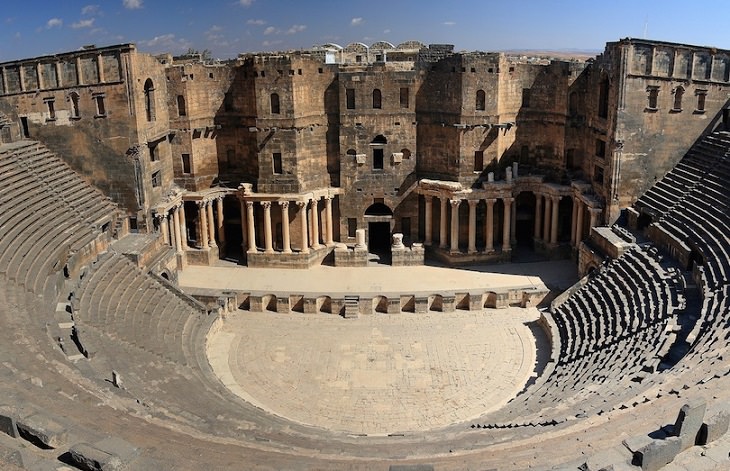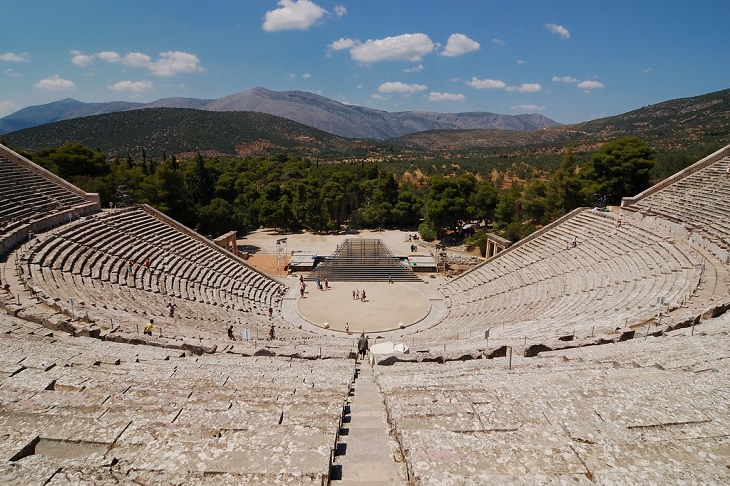
The remains of ancient Greek and Roman theaters lie scattered around the Mediterranean. The Greek theaters were huge, open-air structures constructed on hill slopes. On the other hand, Roman theaters, although heavily influenced by the Greeks, were built upon their own foundations. Theaters originated in ancient Athens where they were originally used by the Athenians to host festivals honoring Dionysus, the god of fertility and wine. These festivals often featured dramatic performances of tragedy, satyr and comedy plays.
The Romans, less philosophical than the Greeks, wanted pure entertainment with lots of humor and excitement. Popular entertainment in Roman theaters included mime plays, comedies, tragedies, jugglers, acrobatics, animal fights and gladiator fights. However, the last two were more common in the Roman amphitheater.
Below you can find some of the most preserved and amazing ancient theaters of Greek and Roman antiquity.
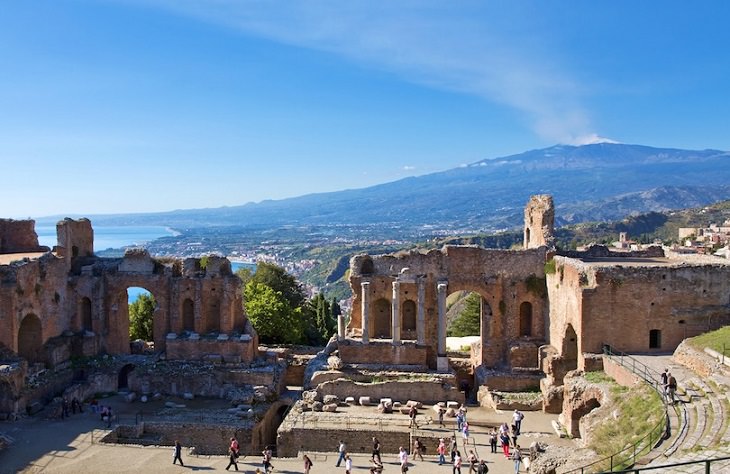
Taormina was a small Greek colony on the east coast of Sicily. The Taormina theater was constructed by the Greeks in the 2nd century BC and was restructured and widened by the Romans. This ancient theater sits in a beautiful location which overlooks the Bay of Naxos and Mount Etna. Today it acts as the center of Taormina’s international film festival.
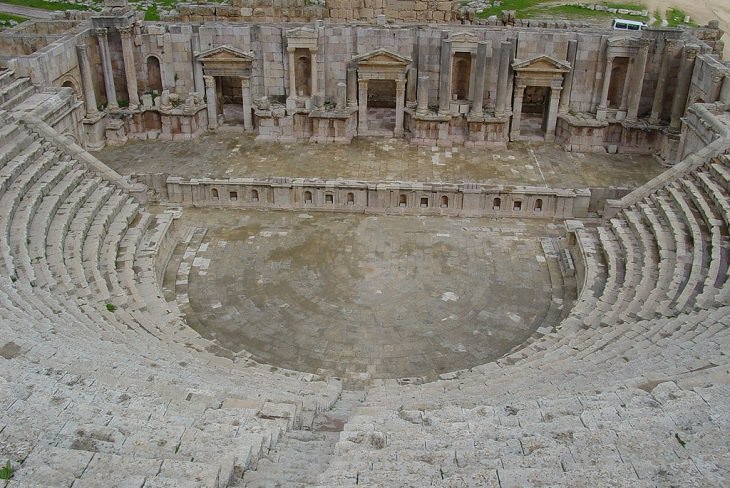
Jerash is one of the most popular archeological sites in Jordan (second only to Petra). This city’s golden age came about under Roman rule and this site is now widely acknowledged as one of the best preserved Roman provincial towns in the world. Jerash contains two stunning Roman theaters. The North Theater, with a capacity of 1,600, was built in 165 AD and was mostly used as the city’s council chamber. The larger South Theater was built somewhere between 90-92 AD and could hold more than 3,000 spectators.
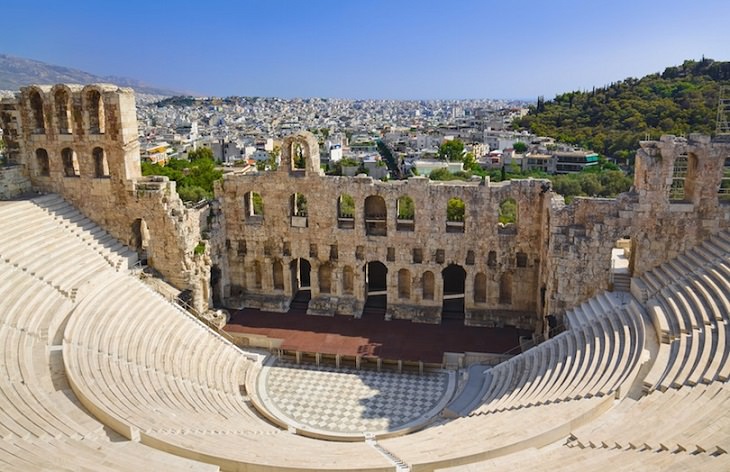
The Odeon of Herodes Atticus, cut into the southern slope of the Athenian Acropolis, was constructed in 161 AD by Herodes Atticus (a Roman senator) in memory of his late wife. The structure was used as a theater for various plays and music concerts. It originally had a wooden roof and could hold up an audience of around 5,000 people.
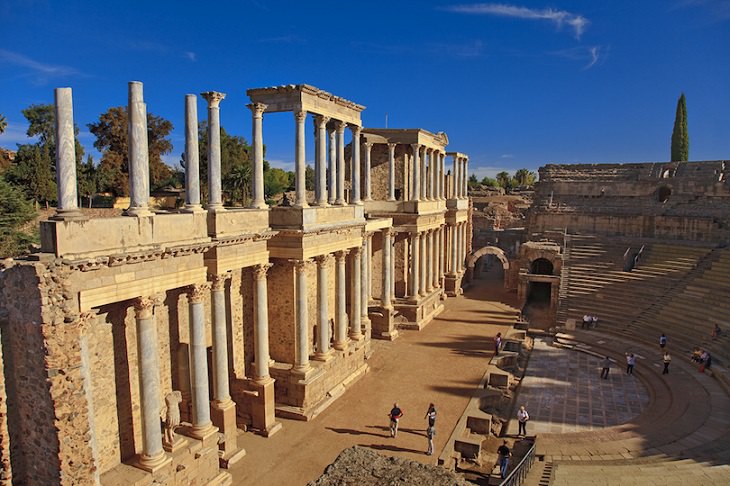
According to an inscription, the Roman Theater of Merida (situated in present-day Spain was built in 16BC by order of Agrippa, a general and close friend of emperor Augustus. This ancient theater could hold up to 6,000 spectators. This theater has undergone quite a bit of restoration, and it was restored to its current state in the 1960s-1970s.
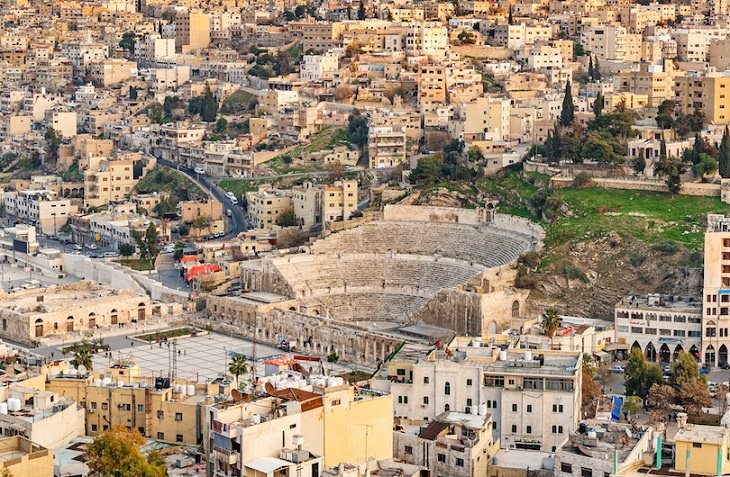
The Roman Theater of Amman in Jordan was built during the reign of Marcus Aurelius in the 2nd century AD. This large theater could hold an audience of around 6,000. It was cut into a hillside facing north so that the sun would never shine directly on the spectators. The theater has three tiers: one tier, closest to the action, was for the rulers, another was for the military, while a third tier was for the general public. Although the third tier was quite far from the stage, the actors could still be heard clearly thanks to the steepness of the theater.
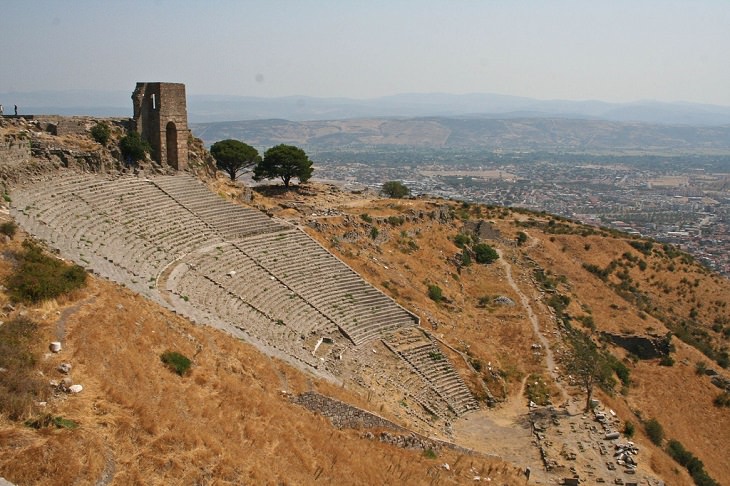
Pergamum was a Greek colony on the Aegean coast of Anatolia. Although this is one of Turkey’s lesser known archaeological sites it contains a few notable structures, such as this theater. The Pergamum theater was built in the 3rd century and could hold up to 10,000 spectators. It is one of the steepest theaters in the world.
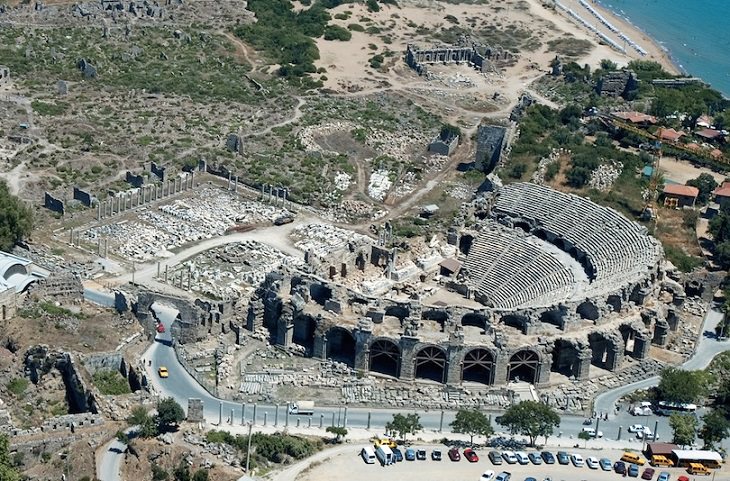
Side is a popular resort town on the southern coast of Turkey. This city was founded by Greek settlers in the 7th century BC and, at the time, was one of the most important trade centers in the region. Sometime around 25 BC Side became part of the Roman province Galatia and it prospered through its trade of olive oil and slaves. The Theater of Side is still in fairly good condition and it could seat 15,000 to 20,000 people.
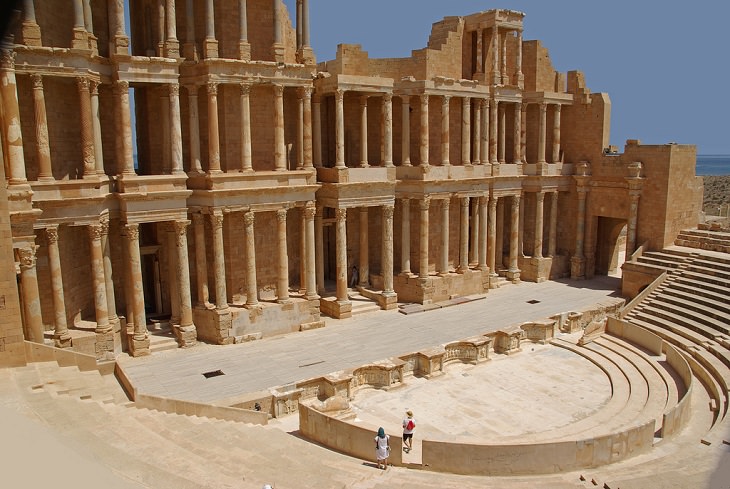
Sabratha, located in Libya, was established around 500 BC as a Phoenician trading-post and it reached its peak under Roman rule as a costal outlet for the products of the African hinterland. The Theater of Sabratha was constructed in the 2nd century AD. The structure remains largely intact thanks to reconstruction by Italian archaeologists in the 1930s. This theater had 25 entrances and could seat around 5,000 spectators.


The ruins of Ephesus are a popular tourist attraction located on the west coast of Turkey. This city was once famed for the Temple of Artemis, one of the seven wonders of the world, which was destroyed by a mob in 401 AD. However, the Great Theater still remains. This large theater, capable of holding up to 25,000 spectators, was originally used for drama, but during later Roman times it was used to host gladiator fights.

Aspendos has one of the best preserved ancient theaters of antiquity. The Aspendos Theater, located in south-west Turkey, was built in 155 AD during the time of the Roman Empire Marcus Aurelius and could seat between 15,000 to 20,000 spectators. Since the stage area was later used as a roadside inn in Seljuk times, it was continuously maintained and restored. As a result of this continuous restoration, the Aspendos Theater has been able to survive without losing any of its original qualities.
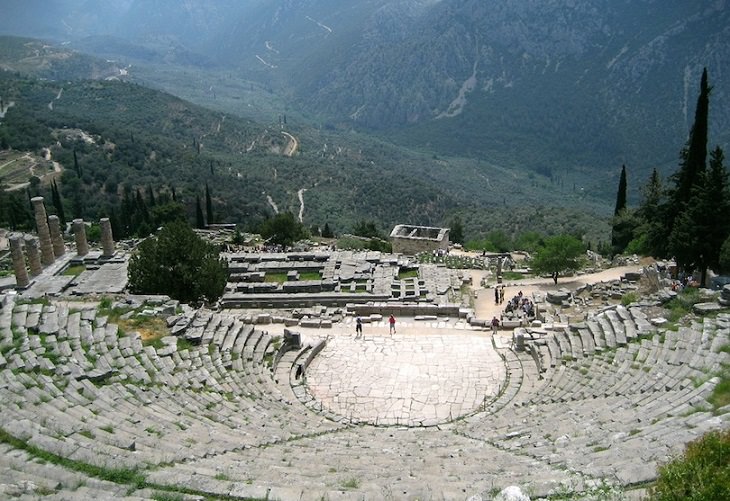
Delphi was one of the most important sites in ancient Greek religion as it was home to the sanctuary and oracle of Apollo. The ancient Delphi theater in Greece was built on a hillside giving spectators a splendid view of the entire sanctuary and landscape below. It was originally built in the 4th century BC and could seat around 5,000 spectators.
